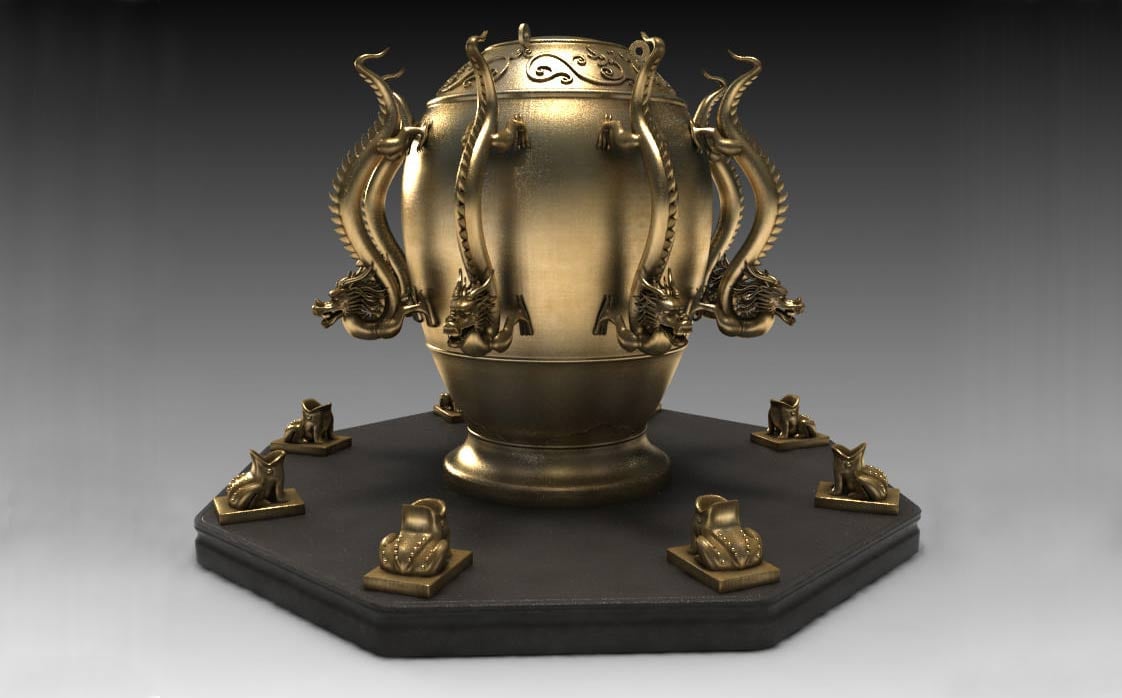Ancient Chinese Earthquake Detector Invented 2,000 Years Ago Really Worked!
Although we still cannot accurately predict earthquakes, we have come a long way in detecting, recording, and measuring seismic shocks. Many don’t realise that this process began nearly 2000 years ago, with the invention of the first seismoscope in 132 AD by a Chinese inventor called Zhang (‘Chang’) Heng. The device was remarkably accurate in detecting earthquakes from afar, and did not rely on shaking or movement in the location where the device was situated.
The ancient Chinese did not understand that earthquakes were caused by the shifting of tectonic plates in the Earth's crust. Instead, the people explained them as disturbances with cosmic yin and yang, along with the heavens' displeasure with acts committed (or the common peoples' grievances ignored) by the current ruling dynasty. Considering the ancient Chinese believed seismic events were important signs from heaven, it was important for the Chinese leaders to be alerted to earthquakes occurring anywhere in their kingdom.
Zhang Heng: Ancient Inventor
Zhang Heng was an astronomer, mathematician, engineer, geographer and inventor, who lived during the Han Dynasty (25 – 220 AD). He was renowned for inventing the world’s first water-powered armillary sphere for astronomical observation, improved the water clock, and documented about 2,500 stars in a detaile star catalogue. He is also widely believed to have invented the first odometer.
But the invention that created the greatest shockwaves was the world’s first earthquake detector. According to the Book of Later Han (compiled by Fan Ye in the 5th century), Zhang Heng’s earthquake detector was able to determine the direction of an earthquake hundreds of miles away.
Zhang's seismoscope was a giant bronze vessel, resembling a samovar almost 6 feet in diameter. Eight dragons snaked face-down along the outside of the barrel, marking the primary compass directions. In each dragon's mouth was a small bronze ball. Beneath the dragons sat eight bronze toads, with their broad mouths gaping to receive the balls. His device also included a vertical pin passing through a slot in the crank, a catch device, a pivot on a projection, a sling suspending the pendulum, an attachment for the sling, and a horizontal bar supporting the pendulum – this invention was no mean feat!
The exact mechanism that caused a ball to drop in the event of an earthquake is still unknown. One theory is that a thin stick was set loosely down the centre of the barrel. An earthquake would cause the stick to topple over in the direction of the seismic shock, triggering one of the dragons to open its mouth and release the bronze ball. The sound of the ball striking one of the eight toads would alert observers to the earthquake and would give a rough indication of the earthquake's direction of origin.
138 AD: Earthquake Detected!
In 138 AD, the sound of the bronze ball dropping caused a stir among all the imperial officials in the palace. No one believed that the invention actually worked. According to the direction in which the dragon that dropped the ball was oriented, it was determined that the quake had occurred to the west of Luoyang, the capital city. Since no one had sensed anything in Luoyang proper, people were sceptical. However, a few days later, a messenger from the western Long region (today, southwest Gansu province), which was west of Luoyang, reported that there had been an earthquake there. As it happened exactly the same time that the seismometer was triggered, people were greatly impressed by Zhang Heng’s instrument.
In 2005, scientists in Zengzhou, China (which was also Zhang's hometown) managed to replicate Zhang's seismoscope and used it to detect simulated earthquakes based on waves from four different real-life earthquakes in China and Vietnam. The seismoscope detected all of them. As a matter of fact, the data gathered from the tests corresponded accurately with that gathered by modern-day seismometers!
Today, from an advanced modern science and technology point of view, the seismometer Zhang Heng invented is still considered amazingly refined and remarkable and way ahead of its time.
Featured image: A modern replica of Zhang Heng’s famous seismoscope. Photo: Houfeng Didong
By Joanna Gillan


















Comments
this is so awesome
this is so awesome
Yes, the earliest "Compass" Si Nan is not a real compass, and it does not work like a compass. It is the device used to measure the "Big Dipper". However, there is proof that Chinese invented paper, gunpowder, and printing. Even though people from other countries improved printing, but still the earliest paper record's printing is from China.
1)china did not invent paper, gun powder,printing, compass.
Professor Joseph Needham proved china invented paper, gun powder,printing, compass.
Needham has been criticized for his strong inclination to exaggerate Chinese technological
achievements.
2) Example compass.
The compass was invented in italy.
The pointer of the ancient chinese compass is as big as a spoon.
The spoon is put on the top of a plate, and there is nothing else.
Compass - Wikipedia, the free encyclopedia (china, Sinan)
The ancient chinese compass was a junk. It could not work.
you must be a fool to believe it works.
Pages